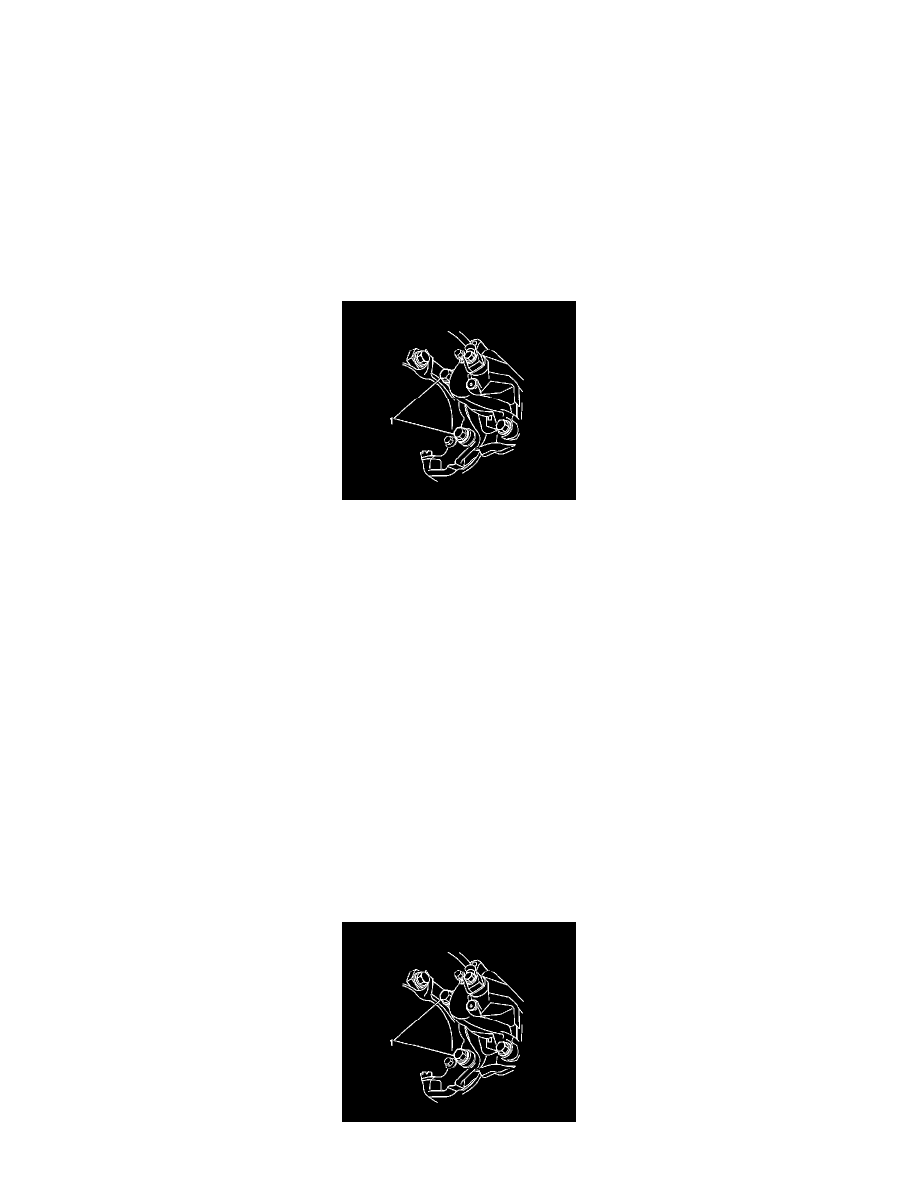Terraza FWD V6-3.5L VIN 8 (2005)

Brake Rotor/Disc: Service and Repair
Brake Rotor Replacement - Rear (RPO Codes J65, JL9)
Brake Rotor Replacement - Rear (RPO J65, JL9)
^
Tools Required
-
J 41013 Rotor Resurfacing Kit
-
J 42450-A Wheel Hub Resurfacing Kit
Caution: Refer to Brake Dust Caution in Service Precautions.
Removal Procedure
1. Raise and support the vehicle. Refer to Vehicle Lifting.
2. Remove the tire and wheel assembly.
3. Notice: Support the brake caliper with heavy mechanic's wire, or equivalent, whenever it is separated from its mount and the hydraulic flexible
brake hose is still connected. Failure to support the caliper in this manner will cause the flexible brake hose to bear the weight of the caliper, which
may cause damage to the brake hose and in turn may cause a brake fluid leak.
Remove the caliper bracket bolts (1).
4. Remove the brake caliper and the caliper mounting bracket as an assembly from the suspension knuckle and support the assembly with heavy
mechanic's wire, or equivalent. Ensure that there is no tension on the hydraulic brake flexible hose.
5. Matchmark the position of the brake rotor to the wheel studs.
6. Remove the brake rotor. If the rotor is difficult to remove, ease it off by gently rotating it as you pull outward.
Installation Procedure
1. Important: Whenever the brake rotor has been separated from the hub/axle flange, any rust or contaminants should be cleaned from the hub/axle
flange and the brake rotor mating surfaces. Failure to do this may result in excessive assembled lateral runout (LRO) of the brake rotor, which
could lead to brake pulsation.
Using the J 42450-A, thoroughly clean any rust or corrosion from the mating surface of the hub/axle flange.
2. Using the J 41013, thoroughly clean any rust or corrosion from the mating surface and mounting surface of the brake rotor.
3. Inspect the mating surfaces of the hub/axle flange and the rotor to ensure that there are no foreign particles or debris remaining.
4. Install the brake rotor to the hub/axle flange. Use the matchmark made prior to removal for proper orientation to the flange.
5. If the brake rotor was removed and installed as part of a brake system repair, measure the assembled lateral runout (LRO) of the brake rotor to
ensure optimum performance of the disc brakes.
6. If the brake rotor assembled LRO measurement exceeds the specification, bring the LRO to within specifications.
